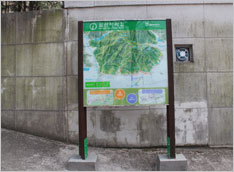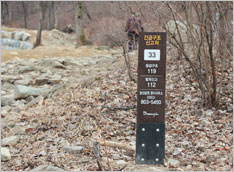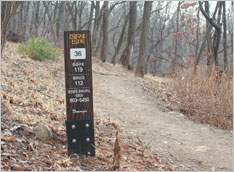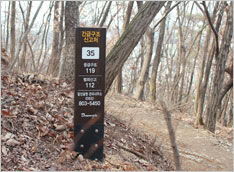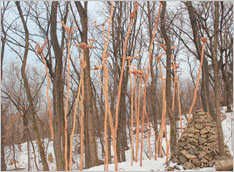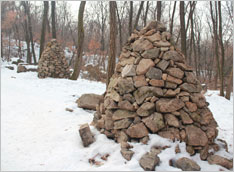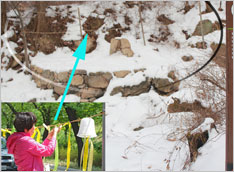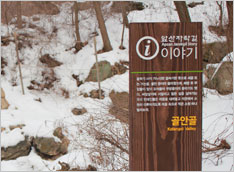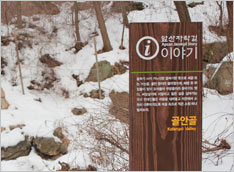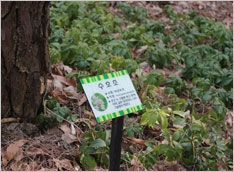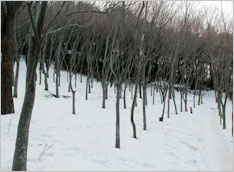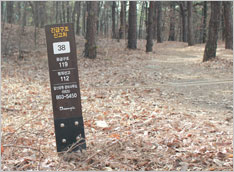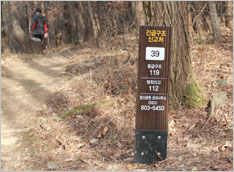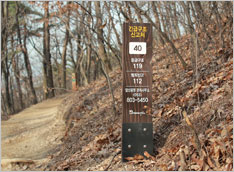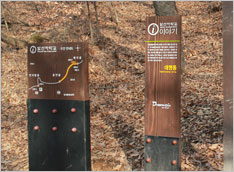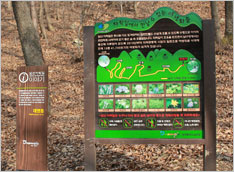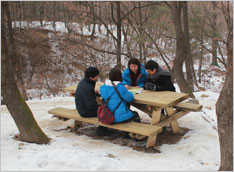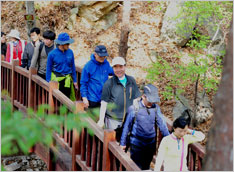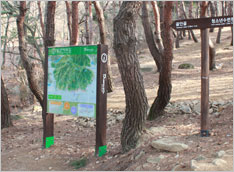- 홈
- Unique Ecological Tourism
- Apsan Jarak-gil Trail
- Jarak-gil Section
- Trail 6 : Path of Wishes
Jarak-gil Section
Trail 6: Path of Wishes
- Comprehensive information signboard
- Structure signs33
- Structure signs34
- Structure signs35
- Structure signs36
- Sotdae
- Stone piles
- Prayer area
- Storytelling signboard (Golangol)
- Structure signs37
- Wild flower field
- Wooden bridge
- Structure signs38
- Structure signs39
- Structure signs40
- Storytelling signboard (Golangol)
- Wild flower field
- Picnic tables and benches
- Wooden bridge
- Comprehensive information signboard
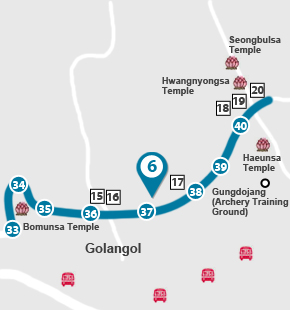
- Trail 6
Anjiranggol – Maejagol Hwangnyongsa Temple
- Distance
1.1km
- Duration
about 22 min
Course Description
| Course Description |
Golangol was also called “Mudanggol” because many mudangs, or shamans, settled down here after Korea was liberated from Japanese colonial rule. This explains the piles of “wishing stones,” sotdae (poles that used to be erected at the entrance of a village as a symbol of a village guardian deity or village boundary), and the prayer area, features that were often found in rural villages in the old days. Visitors are invited to take a moment and add a small stone to one of the piles of stones and make a wish. As they enjoy the simple but beautiful Korean flowers, such as Big Blue Lilyturfs, Day Lilies, and Aquilegia Japonica Nakai et H.Hara, while walking through the lush woodland of Golangol and Maejagol, visitors will be calmed by the peaceful, distinctive songs of the mountain birds. A good way to end a walk here is by stopping at Apsan Ppallaeteo Park, located on the other side of the Apsan Beltway, or continuing down to the Apsan Food Trail to try some unique dishes infused with local flavors. |
|---|

- 자료 담당자 :
- 도시재생과 이경옥 664-2852
- 최근자료수정일 :
- 2019.12.02

